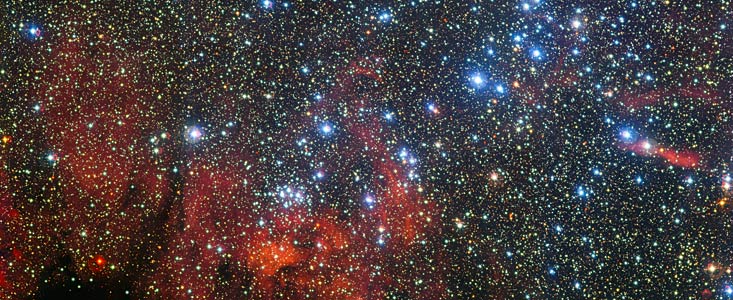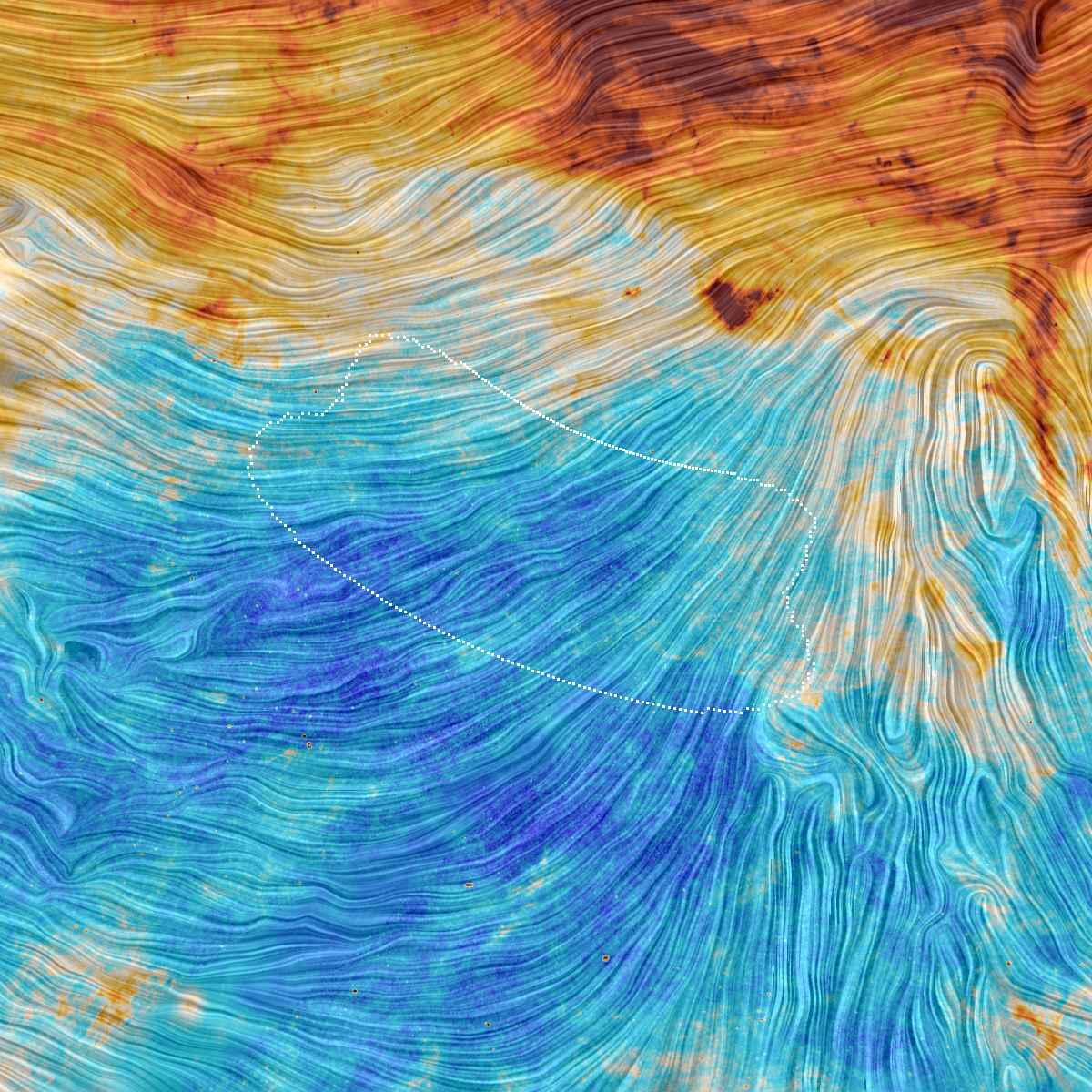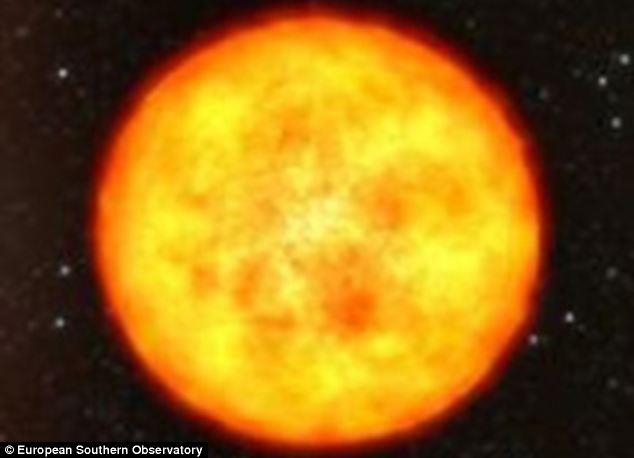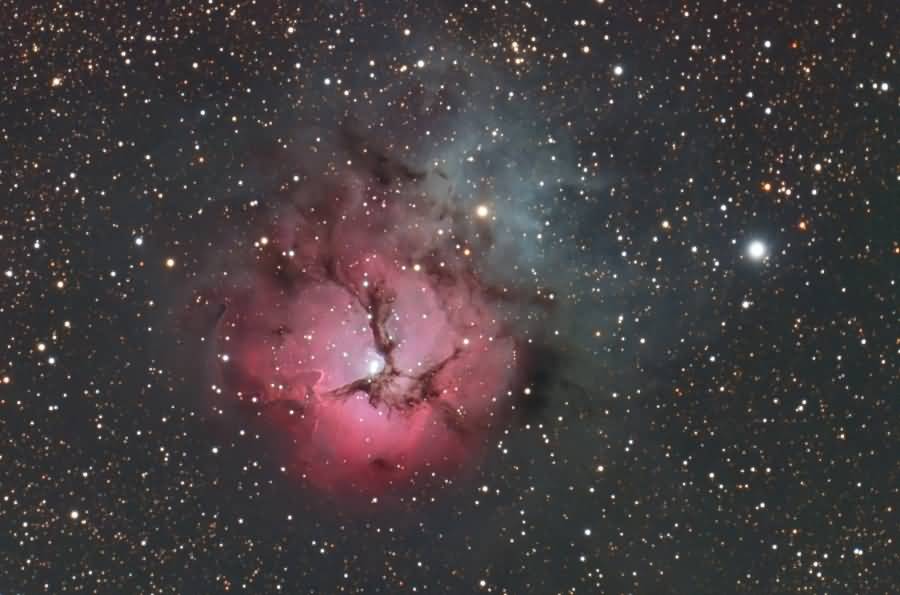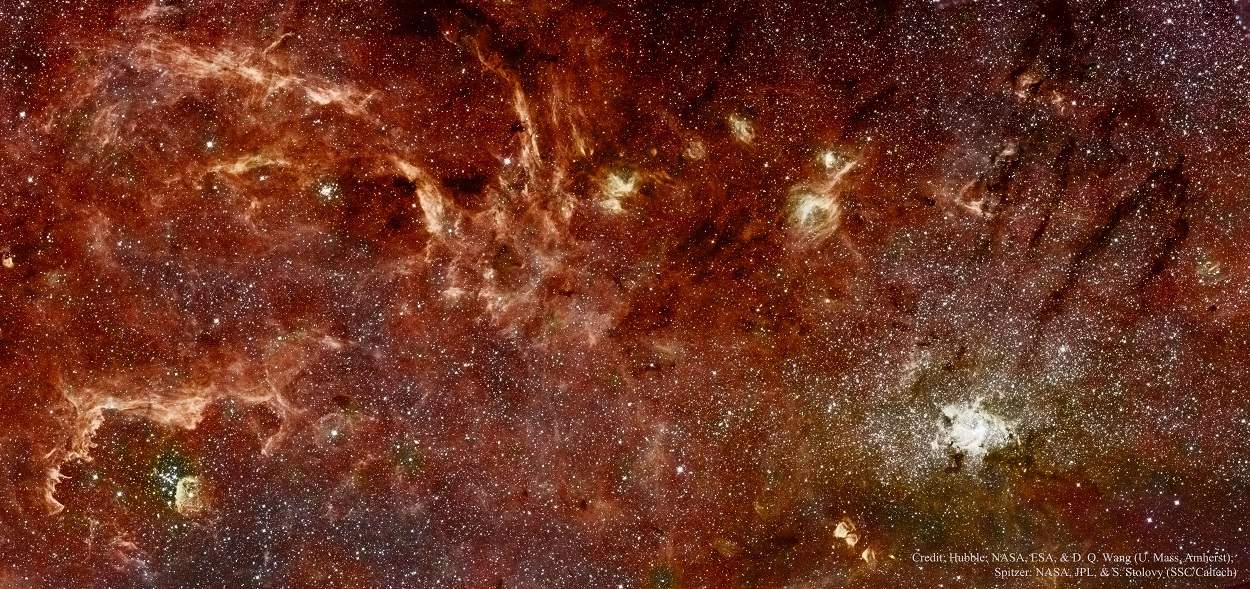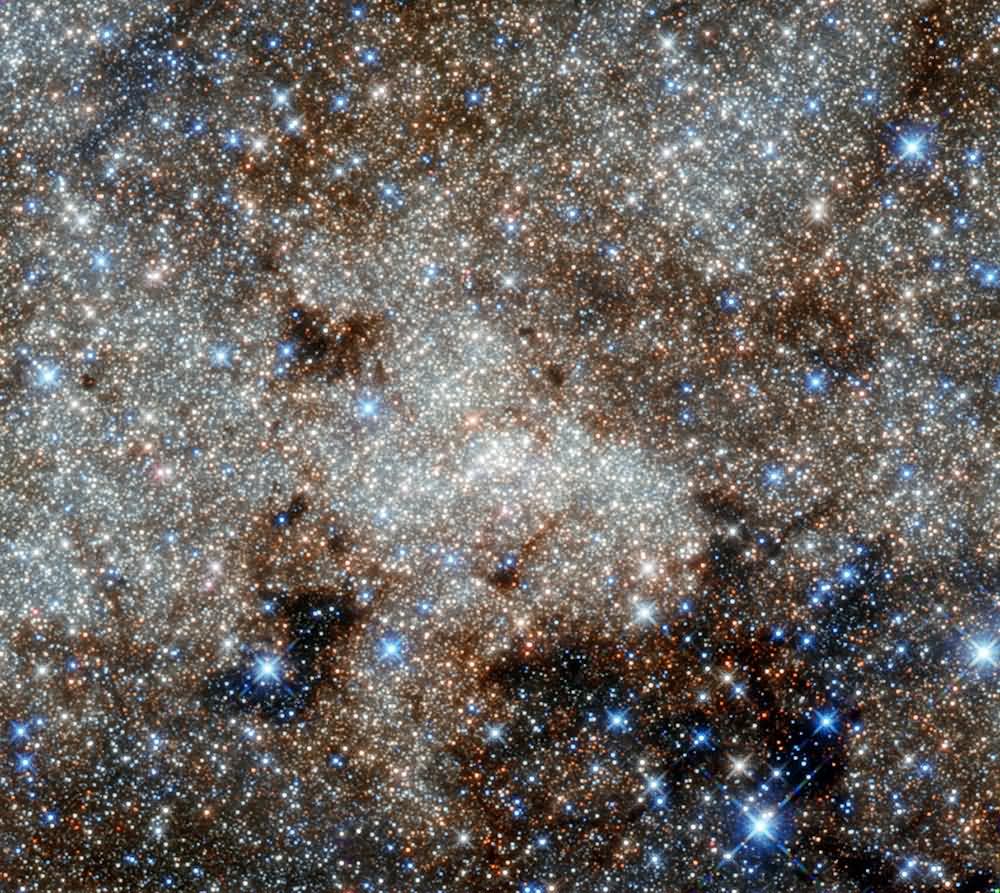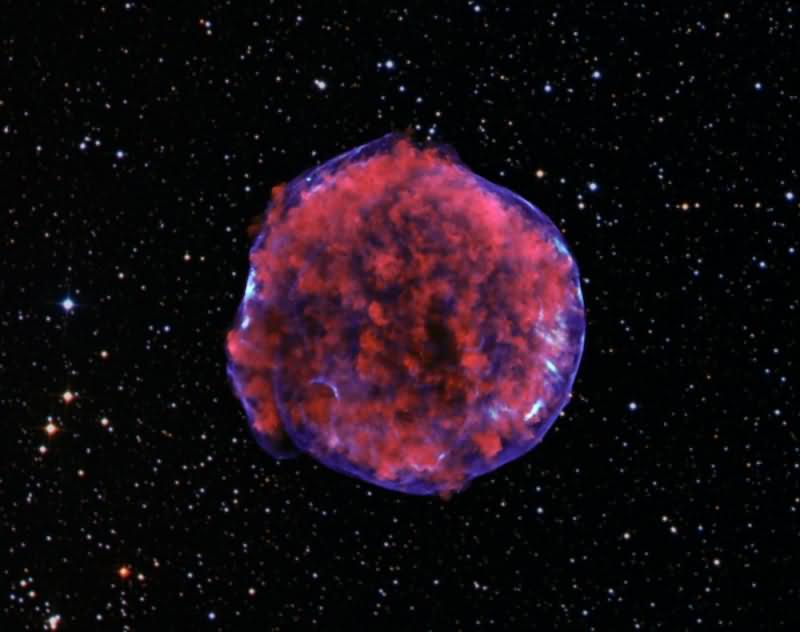A Star Cluster in Carina
This colourful new image, taken with the MPG/ESO 2.2-metre telescope at ESO's Paranal Observatory in Chile, shows the star cluster NGC 3590. Its stars shine against a striking landscape of dark dust patches and glowing clouds of rich gas. This small stellar cluster is providing astronomers with clues about how these stars form and evolve—as well as some insights into the structure of our own galaxy's pinwheel-like arms.
NGC 3590 is a small open cluster of stars located about 7,500 light-years from Earth in the constellation Carina. It contains dozens of weakly gravitationally bound stars and is approximately 35 million years old.
The cluster isn't just pretty; it's also very useful to astronomers. By studying this particular cluster—and others nearby—astronomers can explore features of the spiral disk of our Milky Way galaxy. NGC 3590 lies within the largest single patch of a spiral arm visible from our vantage point in our galaxy: the spiral region of Carina.
The Milky Way has many spiral arms, long curved streams of gas and stars that extend outward from the galactic center. These arms—two main, star-filled arms and less crowded smaller arms—are named after the most prominent constellations within them. [1]The spiral region of Carina, located in the minor arm of Sagittarius-Carina, can be seen from Earth as a patch of sky full of stars.
The name given to this area—Carina, or the Backbone—is quite apt. These spiral arms are actually composed of accreted waves of gas and stars that, in a sense, stimulate clusters like NGC 3590, which are located throughout the galactic disk and trigger luminous star formation. Finding and observing stars like NGC 3590 allows us to determine the distances to different segments of the spiral arm and, therefore, further understand its structure.
Typical open clusters can contain anywhere from a few dozen to a few hundred stars, providing astronomers with clues about stellar evolution. Stars in clusters like NGC 3590 are born from the same gas cloud at roughly the same time, making them excellent test beds for understanding how stars are born and evolve.
This image from the Wide Field Imager (WFI) on the MPG/ESO 2.2-metre telescope at La Silla shows the cluster and its surrounding gas clouds, which glow orange and red due to the radiation from hot nearby stars. The WFI's wide field of view also allows for the imaging of numerous background stars.
To create this image, different colors were observed in different regions of the region using different filters. Images of the visible and infrared regions of the spectrum were then combined with images taken through a special filter that detects only the light from the emitted hydrogen.
Notes
[1] These four arms are the Carina-Sagittarius, the Ruler, the Shield-Centaurus, and the Hero arms.
Connections
- MPG/ESO 2.2-metre telescope photos
- Images taken with the MPG/ESO 2.2-metre telescope
- La Silla Photos
This is a translation of the ESO Press Release eso1416.

